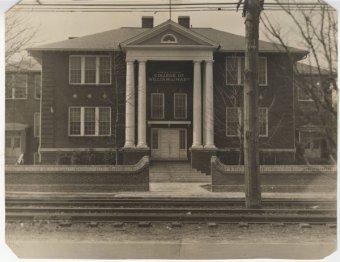"For educators, policymakers, accrediting agencies, and the general public, the critical issues for the foreseeable future are certain to include the question of whether and to what extent colleges and universities are producing more competent students."
- SACSCOC Resource Manual
Assessment Origins
In 1985, the Southern Association of Colleges and Schools Commission on Colleges SACSCOC issued its Criteria for Accreditation that included educational outcomes assessment, or institutional effectiveness, in order "to emphasize the results of education and to focus on the extent to which the institution uses assessment information to reevaluate goals, to make essential improvements, and to plan for the future."
In 1986, the Virginia legislature directed all public institutions in the Commonwealth "to establish assessment programs to measure student achievement."
In April 1987, the State Council for Higher Education in Virginia (SCHEV) mandated guidelines for a statewide campus-based assessment program, the first of its kind in the United States. Also that year, the American Association for Higher Education (AAHE) initiated the Assessment Forum, a national network to connect and support higher education assessment efforts.
Federal regulations were revised to require that to obtain federal recognition, accreditation agencies must include evidence of institutional outcomes in their procedures and criteria for the accreditation of institutions within their jurisdiction. The number of colleges and universities carrying out assessment activities since the early 1980s has grown from a handful to virtually all institutions of higher education today.
Continuing to Build Upon Strengths
Build an assessment process for students that includes students
Continue developing assessment plans and reports that serve academic programs and administrative units to encourage evidence-based decision making
Utalizing Weave as a system for storing assessment plans and reports, and collecting data.
Remain focused on refining the processes and using them to produce data for improving student learning, enhancing programs, and guiding University decision-making.
Build an assessment process for students that includes students
Continue developing assessment plans and reports that serve academic programs and administrative units to encourage evidence-based decision making
Utalizing Weave as a system for storing assessment plans and reports, and collecting data.
Remain focused on refining the processes and using them to produce data for improving student learning, enhancing programs, and guiding University decision-making.
Assessment at Old Dominion University
Assessment at Old Dominion University began in the 1986-87 academic year as the Assessment of Academic Achievement (AAA) Task Force within the Office of Student Services. Its mission was to develop a comprehensive plan to assess academic achievement at the undergraduate level.
An important breakthrough for the Assessment Program occurred in 1992 with the recognition that the data and analysis that had accumulated over several years were now being viewed as an important source of information on the effectiveness of the institution. Evaluating various aspects of the undergraduate experience and making the results available to decision-makers for actions related to the goal of curriculum improvement became the objective of the Assessment Program.
Present Day
Over the last five years, ODU's assessment program has been guided by Dave Hager, John P. Broderick, Phil Langlais, Scott Harrison, Heather Huling, Marty Sharpe, and Worth Pickering, to build the infrastructure for assessment. These guiding principles have since been carried out by official Institutional Effectiveness & Assessment staff members, as well as a handful of unofficial faculty and staff who've become advocates and supporters of IE&A, who've provided us with the capacity to assist the campus community effectively and efficiently.
About Accreditation
Curious about ODU's accreditation process? Click the button for more information!



